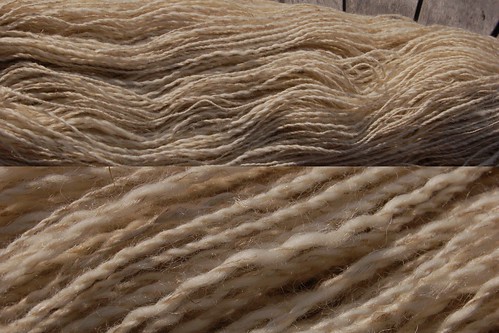Textiles : Fiber
Textile Standards
-
American Society for Testing and Materials (ASTM) Standards"ASTM's textile standards provide the specifications and test methods for the physical, mechanical, and chemical properties of textiles, fabrics, and cloths, as well as the natural and artificial fibers that constitute them."
-
International Working Group (IWG) on Global Organic Textile Standard"The Global Organic Textile Standard (GOTS) is the worldwide leading textile processing standard for organic fibres, including ecological and social criteria, backed up by independent certification of the entire textile supply chain."
Textile Quality Control
-
An introduction to quality control for the apparel industryCall Number: HD9866 J32 M44 1992 (Steenbock Stacks -1st Floor)
-
Handbook of textile testing and quality controlCall Number: TS1449 G75 (Steenbock Stacks -1st Floor)
-
Quality Assessment of Textiles: Damage Detection by MicroscopyCall Number: [electronic resource]
Textile Testing
-
Textile Test MethodsCall Number: GS 2.8/3: 191 (Wendt LibTech Reports Ctr. Stacks, 3rd Floor, Noncirculating)
-
Impact Phenomena in TextilesCall Number: TS1449 L9 (3-D-10) (UW Madison Shelving Facility)
Fiber Classification
Fibers comprise textile fabrics. Textile fibers are usually one of two kinds: natural or manufactured. Natural fibers are those found in nature, whether their origin is cellulose-based (e.g. cotton, sisal, flax/linen) or protein-based (e.g. wool, silk, asbestos). Manufactured fibers are man-made through a process transforming natural raw materials or synthetic materials from a liquid-state to a solid fiber. There are numerous examples of manufactured fibers; some general examples include spandex, polyester, and rayon.
*Humphries, Mary. Fabric Reference (3rd Edition). Upper Saddle River, N.J. : Pearson/Prentice Hall, 2004.
Sustainable Fibers
- Sustainability is a hot topic in textile production right now. Some examples of sustainable, and other, fibers can be found in a chart created by Earth Pledge, a foundation that "promotes and supports sustainable development programs." [Retrieved February 24, 2010 from Earth Pledge website.]
- 2009 was declared the "International Year of Natural Fibres" by the United Nations. Click here to read more about it.
Fibers & Fiber Care
FiberLinks
Collection of fiber related links from the American Fiber Manufacturers Association.
FabricLink
Includes Fabric University with lots of
information on fibers, yarns and fabric, as well as fabric care,
and trade information.
Fiber World
Classroom
Basic information on fiber products, their
manufacture and care. Also a section on fiber and the environment.
From Fiber to Textile
Fibers are forged into textiles through various techniques. There are dozens of different ways to weave fiber into fabric, but there are two primary categories of textile techniques: loom-woven and non-loom textiles.
A loom is "a device used to weave cloth. The basic purpose of any loom is to hold the warp threads under tension to facilitate the interweaving of the weft threads. The precise shape of the loom and its mechanics may vary, but the basic function is the same." [Retrieved from Wikipedia April 15, 2010.]
Some examples of loom-woven textile styles include:
- Damask
- Satin weave
- Tapestry weave
- Twill
- Velvet
Non-loom textiles are created using a variety of techniques and tools. Some examples include:
- Brading
- Crocheting
- Knitting
- Lace
- Macrame
- Netting
*Gillow, John and Bryan Sentance. World Textiles. Thames & Hudson Ltd. : London, 1999.
